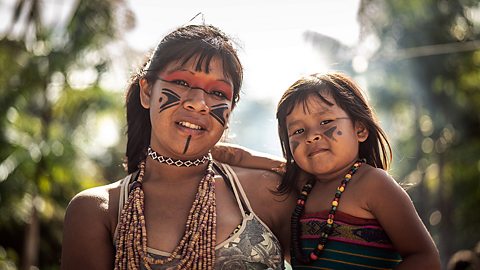What do you know?
What is the climate of a desert?
Deserts have dry climates. They receive less than 250 mm of rainfall each year.
Key points
- Deserts receive less than 5 % of the Earth's annual rainfall. Temperatures in hot deserts can reach 40 °C during the day and drop below freezing at night.
- Deserts face increasing pressure from development. These include agriculture, energy production, mining, tourism and settlement.
- Desertification is the process of land turning into desert. It is caused when plants are removed, and soil is exposed. Desertification of the Sahel region in North Africa is being tackled by the creation of the Great Green Wall.
What are deserts?
Deserts are areas that receive less than 10 inches of rainfall each year. temperatureHow warm or cool something or someone is. Air temperature is usually measured in degrees Celsius (°C). in hot deserts are high during the day and reach below 0 °C at night. The Sahara desert is the world’s largest hot desert. It spans 11 countries in North Africa.
Cold deserts are found at higher latitudeImaginary lines that run east to west around the Earth, parallel to the Equator or 0° latitude. They can be measured in degrees (°)., for example parts of the Arctic and the Antarctic. Hot deserts are common between 15-30° north and south of the equatorAn imaginary line that runs around the Earth. The equator marks the dividing line between the Northern and Southern hemispheres.. Both types of desert are found where dry air is falling.
Plants and animals
Plants and animals have adapted to live in hot deserts. Some examples can be found in the table below.
| Cactus | Cacti have thick, waxy skin to trap water within the plant. Their spikes are protection from animals that may want to eat them. |
| Tumbleweed | Tumbleweed dies during periods of dry weather. The plant dries up and is then blown about by the wind. As it moves, it scatters seed, which grows when the rains return. |
| Camel | Camels have long eyelashes and nostrils that can be closed to keep out any sand blowing in the wind. Camels store fat within their hump, which helps them to survive for long periods of time without eating. |
| Meerkat | Meerkats are camouflaged. Predators find it hard to see them as they blend in with the colour of the desert. They have dark rings around their eyes, which help to reduce the glare of the sun. |
Cactus
Camel
People
Many people live in deserts. The BedouinA nomadic group of people who have traditionally lived in the deserts of northern Africa and the Middle East. live in the Sahara desert and the Arabian desert. They are nomadicAnything that involves moving from place to place eg nomadic hunter-gatherer tribes follow the animals they hunt, carrying their belongings with them. and breed camels and horses. Some cities have been established in deserts, such as Las Vegas in the Mojave Desert, USA. Water from the Colorado River is transported into the city.
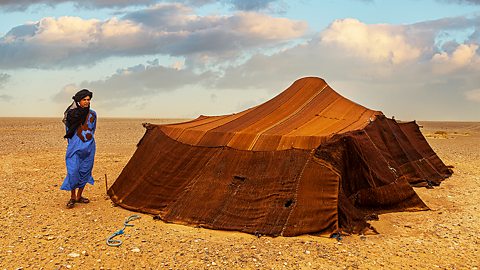
Question
What is stored in a camel’s hump?
Camels store fat within their hump. This helps them to survive when food is scarce. Many people believe that a camel’s hump stores water, but this is not the case.
What challenges are deserts facing?
Deserts face increasing pressure from development.
Agriculture
Large-scale irrigationWhen crops are watered. In the UK, this is usually through a large-scale sprinkler system. means that desert areas can be farmed. Crops such as dates, figs and fruit are commonly grown in deserts. The United Arab Emirates (UAE) lies in the Arabian desert. The country importTo purchase (buy) goods from abroad and bring them into a country. The goods are known as imports. about 80 % of its food and is experimenting with ways to grow crops in the desert to produce more of its own food.
Energy production
The clear skies and high levels of solar energyHeat and light emitted by the sun. It can be used to generate electricity and to heat water. in deserts are ideal for generating electricity. The Noor solar plant in Morocco is the world’s largest concentrated solar power (CSP)Using mirrors to reflect the sun’s energy onto a specific point. The heat can then be used to generate electricity..
Mining
Large oil and gas reserves are often found in desert regions. For example, Saudi Arabia has the second largest proven oil reserves and Qatar has the third largest proven gas reserves. Both countries lie within the Arabian desert.
Settlement
Water supplies can be diverted to allow cities to grow within deserts. For example, Sharm El Sheikh in Egypt is famous for its water sports and scuba diving. However, due to a lack of fresh water in the area, two government owned desalinationThe removal of salt from sea water. This enables sea water to be turned into safe drinking water. companies are operating which require a vast amount of energy to be used. The area relies on tourism and therefore requires water for swimming pools and hotels. The city has a plan to become pollution-free by 2045 under the UN Habitat program.
Tourism
Many desert countries are now using the landscape to generate income from tourists. Activities include camel rides, dune buggyAn off-road vehicle for driving across sand dunes in deserts. trips and sandboardingAn activity similar to surfing, skateboarding or snowboarding. Sandboarding takes place on steep sand dunes, often in deserts. . Despite its location in the desert, the city of Dubai in the United Arab Emirates has many attractions. These include an aquarium, an indoor ski slope and a water park.
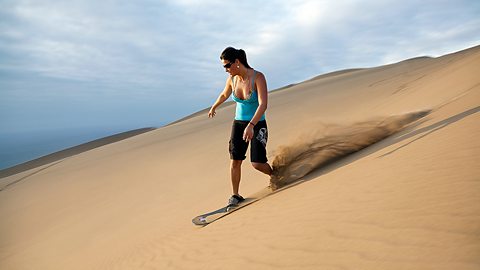
Question
How can energy be generated in hot deserts?
Solar power can be generated in hot deserts. This is because they have clear skies and high levels of solar energy.
Video about hot deserts
How hot deserts are formed and the problems of desertification
Test your knowledge
Play the Planet Planners game! gamePlay the Planet Planners game!
Make decisions for the planet in this KS3 geography game.

More on Global biomes
Find out more by working through a topic
- count4 of 5
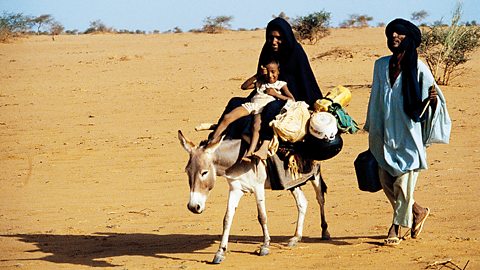
- count5 of 5
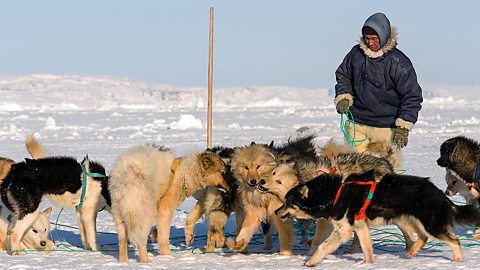
- count1 of 5
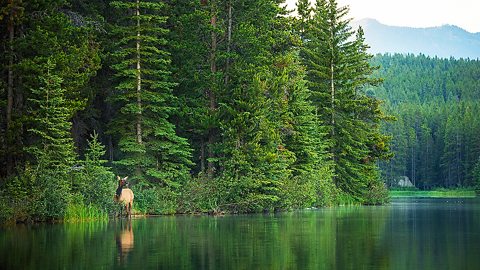
- count2 of 5
